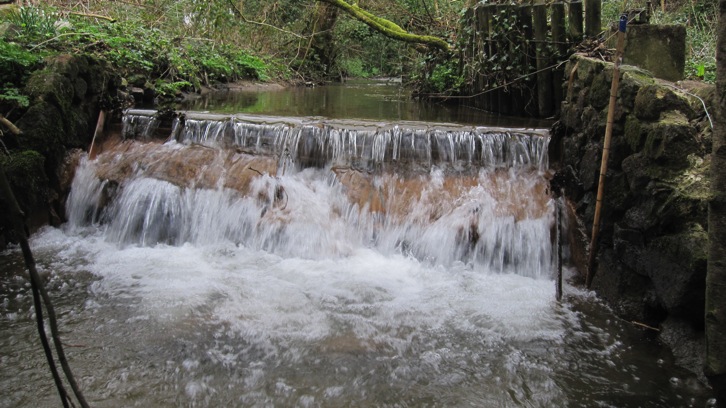The Polgooth stream is the largest tributary of the St Austell River, known locally as the White River, and rises near Trewoon, a small village to the west of St Austell. Like many of the streams and rivers that rise in the St Austell and mid-Cornwall area, it has been heavily affected by historic tin streaming and more recent mining activity such china clay extraction.
This has resulted in many of the streams in the area undergoing significant change and facing multiple pressures, including impacts from mine waste and morphological changes to accommodate roads and drainage works. Consequently, the Polgooth stream has been classified as a heavily modified water body.
The Polgooth has more recently been heavily affected by china clay driers, located at the headwaters of the stream. The effluent from the driers had historically striped the water of its available oxygen which resulted in conditions that were not suitable for salmonid species. However, these driers were decommissioned around five years ago and since then, the water quality has greatly improved.
Recent Environment Agency fisheries survey data suggested that salmonids were absent from the river. Westcountry Rivers Trust also undertook further fisheries surveys in 2013 but found no salmonids at two other survey locations along the river.
The conclusion was, therefore, relatively straightforward; with significantly improved water quality (validated through invertebrate surveys) the main priority on the Polgooth stream is to remove obstacles to migratory species of fish, allowing fish from the main river to access and re-populate the Polgooth.
Walkover survey data from previously surveys carried out by the Trust helped to identify a series of barriers throughout the system. The most significant barrier identified is found along the lower reaches, where the Polgooth stream enters the St Austell River. The last 35 meters of the river have been culverted and this long, dark tunnel, with a smooth, featureless flow, is uninviting for fish to swim through and therefore acts as a total blocker. The proposed solution is to design a by-pass channel to allow fish to past the culvert and enter the stream.
The design of the culvert by-pass is currently being developed under the South Cornwall River Improvement Project (SCRIP), funded via the Catchment Restoration Fund. Devising a solution that is both moderate in cost and long lasting is challenging. Any design and construction must also meet all regulations and be acceptable for the landowner in the long term. The Westcountry Rivers Trust hopes to finalise the design and undertake the work later this year.
In addition to this major barrier, a further three barriers to migration have been identified along the watercourse. One of these was another culvert further upstream that had not been installed adequately and had, over time, led to a downstream drop-off.
This culvert was identified as a priority for removal and, following consultation with the landowners and Cornwall Council, permission was gained to remove the culvert. The crossing point was no longer in use, so it was possible to entirely remove the culvert, re-profile and re-turf the bank, at reasonable cost and all in one day; a great result overall!
Below this site, there is also a weir which serves a small leat that is still in use. As removal of the weir is not a viable option, a pre-barrage or tailwater back-up is proposed which will help to reduce the face height of the weir and increase the take-off depth for fish attempting to move upstream. This will be a low-tech and low cost solution, which should be effective in helping to improve passage for salmonids once access from the main river channel is restored.
Reconnecting the Polgooth to the rest of the St Austell River should have a significant impact on the ecology and fisheries of the area. Given the amount of clay and suspended solids in the main river, it is even more important that fish have access to spawning and juvenile habitat in smaller, cleaner tributaries.

